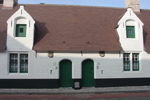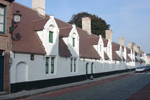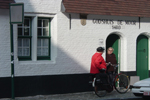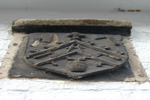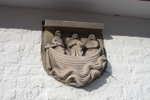Donaes de MoorDonaes de Moor belonged to the upper eschelon of the merchant class in Bruges… and Adriane de VosAdriane was one of five children of Jacob de Vos and Isabel van der Stichelen to reach adulthood… were both wealthy and civic-minded citizens of Bruges; perhaps their most generous gift was the almshouse they founded on 16 August 1480. It was built near the city wall, on the Boeveriestraat, and provided thirteen small abutting houses, each with its own small garden. Four of the residences were to be assigned at the discretion of the Hospital of St. Julian, and three by the guilds of the masons, coopers, and carpenters for the benefit of their elderly members.
The “Godhuis de Moor” remains a visible tribute to the generosity of a couple who lived and worked in Bruges more than 500 years ago; the sturdy structure, lovingly maintained, still provides subsidized housing for the elderly. Today a visitor can still admire the carved stone ornaments on the façade of the houses, depicting the symbols of the guilds whose aged the almshouse once housed as well as the defining event from the life of St. Julian, in which he ferried an angel disguised as an infirm traveller across a river to his hospice for care, and so received absolution for having killed his parents.
Photo credits: Joe Markley

